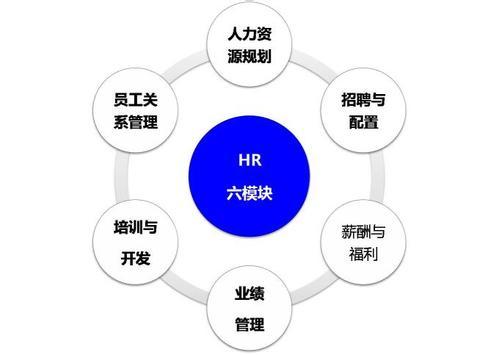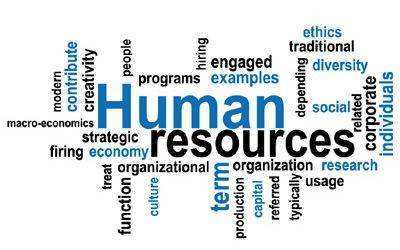
人力资源六大模块 英语,Introduction to Human Resource Management
时间:2024-10-02 来源:网络 人气:
Introduction to Human Resource Management

Human Resource Management (HRM) is a crucial aspect of any organization, ensuring that the workforce is effectively managed to achieve the company's objectives. HRM encompasses a wide range of activities, and it is divided into six primary modules, each playing a vital role in the overall success of the organization. In this article, we will explore these six modules in detail, providing an overview of their functions and significance.
1. Human Resource Planning

Tag: HR Planning
Human Resource Planning is the process of analyzing the current and future workforce requirements of an organization. It involves forecasting the number of employees needed, their skills, and the timing of their recruitment. This module ensures that the organization has the right people in the right positions at the right time. Effective HR planning helps in optimizing the workforce, reducing costs, and improving productivity.
2. Recruitment and Placement

Tag: Recruitment & Placement
Recruitment and Placement is the process of attracting, selecting, and hiring the best candidates for the organization. This module includes activities such as advertising job openings, screening resumes, conducting interviews, and making job offers. The goal is to identify and hire individuals who possess the necessary skills, qualifications, and cultural fit for the organization. Effective recruitment and placement practices can significantly impact the quality of the workforce and the overall success of the organization.
3. Training and Development

Tag: Training & Development
Training and Development is essential for enhancing the skills, knowledge, and abilities of employees. This module involves identifying training needs, designing and implementing training programs, and evaluating their effectiveness. By investing in the development of their employees, organizations can improve productivity, reduce turnover, and foster a culture of continuous improvement. Training and development also help employees adapt to new technologies and changes in the industry.
4. Performance Management

Tag: Performance Management
Performance Management is a systematic process of tracking, measuring, and improving employee performance. This module includes setting performance goals, providing feedback, and recognizing achievements. Effective performance management helps organizations align individual goals with organizational objectives, identify areas for improvement, and reward high-performing employees. It also serves as a basis for making informed decisions regarding promotions, transfers, and terminations.
5. Compensation and Benefits Management

Tag: Compensation & Benefits
Compensation and Benefits Management involves designing and implementing a fair and competitive compensation structure for employees. This module includes determining salary levels, bonuses, and benefits packages. The goal is to attract and retain top talent, motivate employees, and ensure that the organization remains competitive in the market. Effective compensation and benefits management can also help in reducing turnover and improving employee satisfaction.
6. Employee Relations

Tag: Employee Relations
Employee Relations is the process of managing the relationship between the organization and its employees. This module includes activities such as handling employee grievances, promoting a positive work environment, and ensuring compliance with labor laws and regulations. Effective employee relations can lead to higher employee engagement, reduced conflicts, and improved organizational culture. It also helps in maintaining a harmonious work environment, which is essential for the overall success of the organization.
Conclusion

Tag: HRM Conclusion
Human Resource Management is a multifaceted discipline that plays a critical role in the success of any organization. The six primary modules of HRM – Human Resource Planning, Recruitment and Placement, Training and Development, Performance Management, Compensation and Benefits Management, and Employee Relations – are all essential for ensuring that the organization has the right people, with the right skills, in the right positions. By focusing on these modules, organizations can create a competitive advantage, improve employee satisfaction, and achieve their strategic objectives.
相关推荐
教程资讯
教程资讯排行













